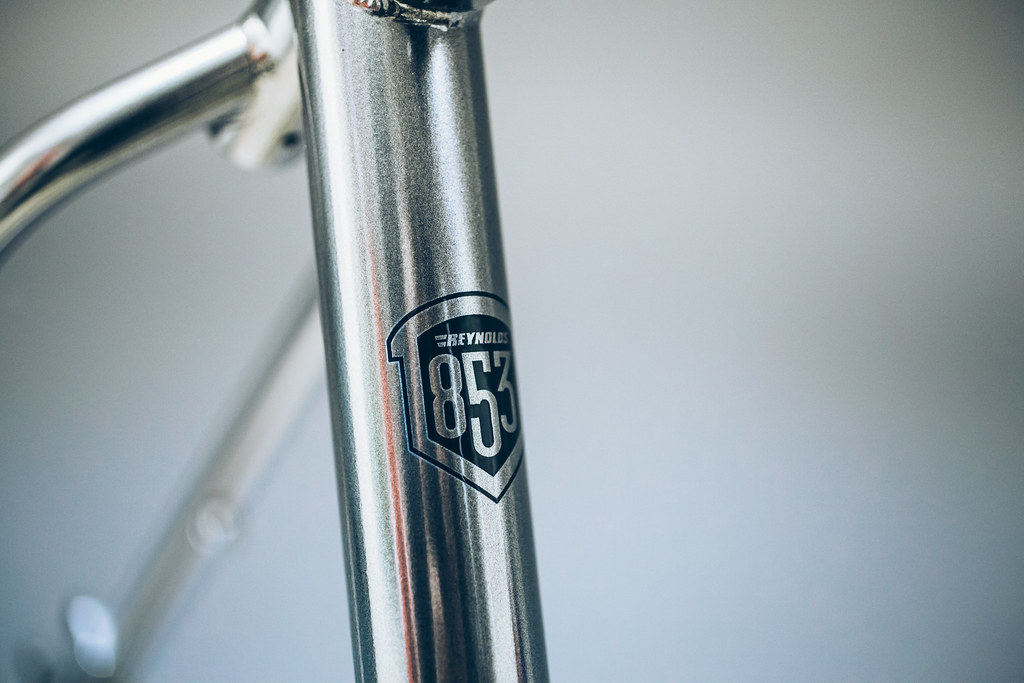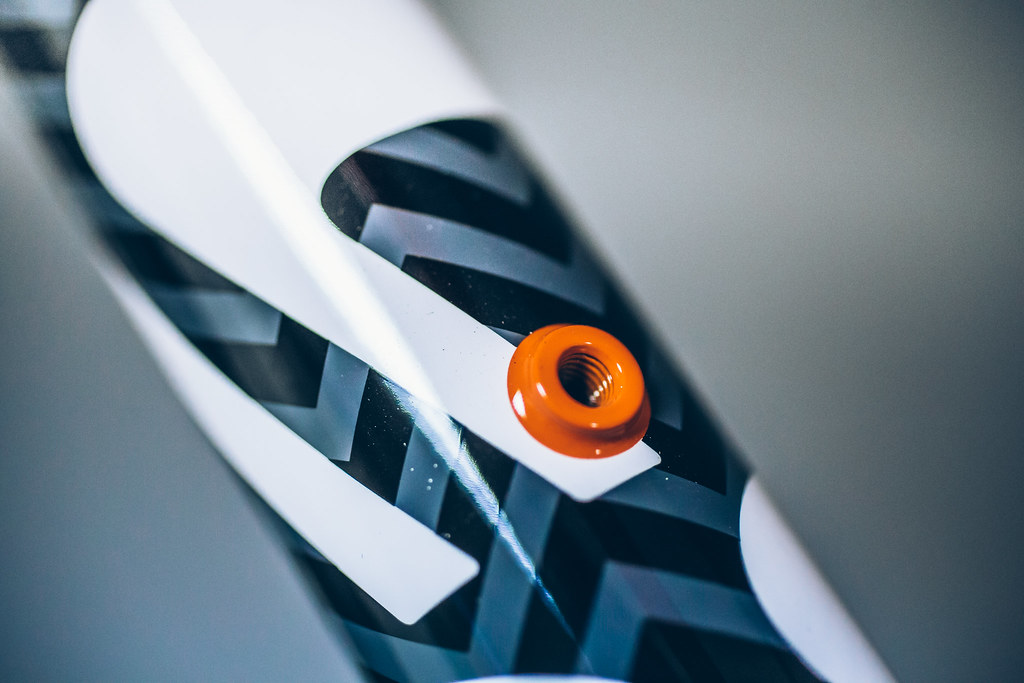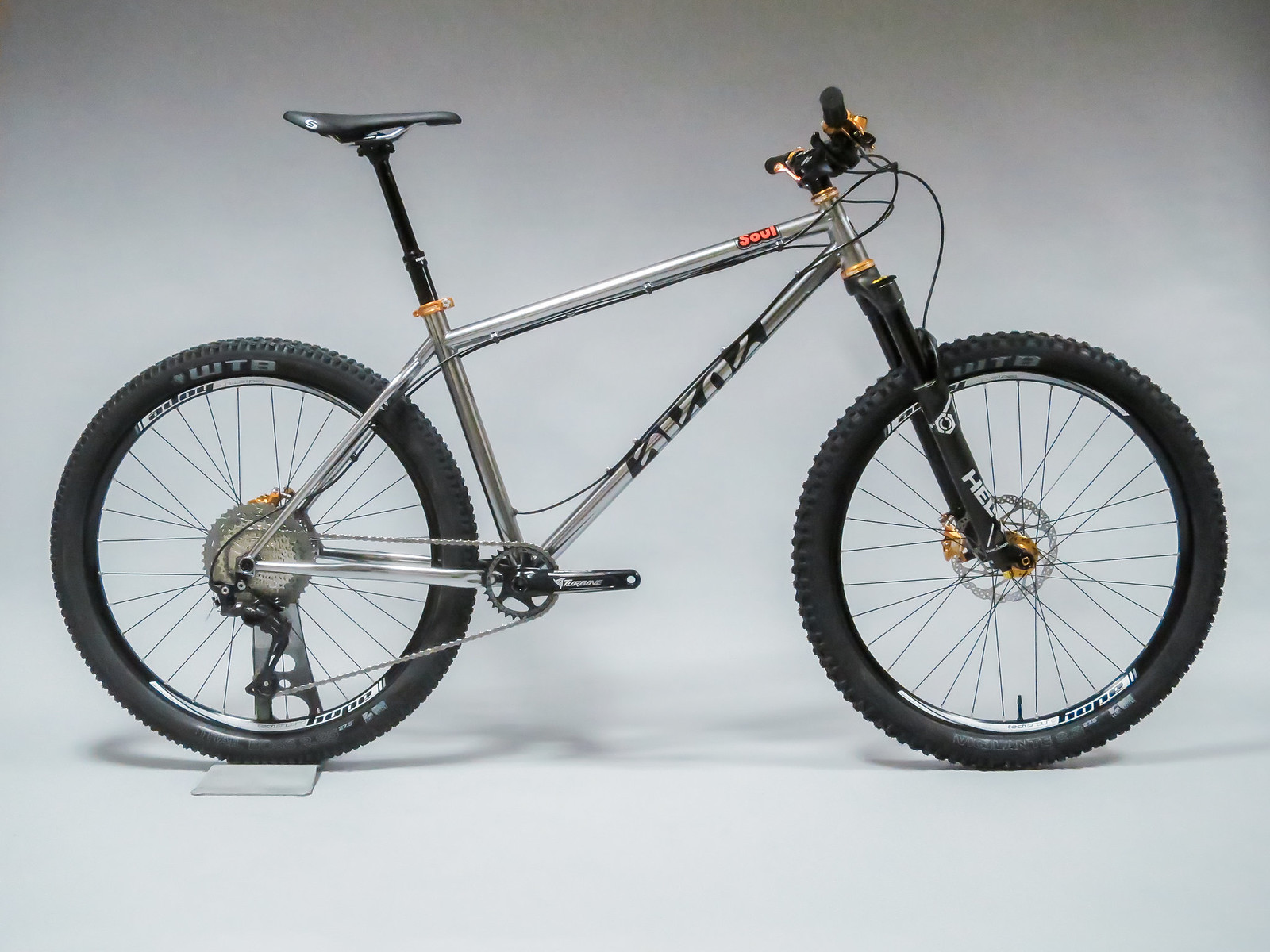27/11/2017 - Soul Launch
Introducing the 2018 soul
the trail icon re-invented
A bit of history, from Cy, our Founder and Designer....
17 years ago I had a steel hardtail with big forks, short stem, risers bars, and a disc brake on the front. It rode nicely enough, but it didn't fit me very well, I couldn't get a rear disc brake or big tyre in there, and I kept tipping off the back on climbs because of the fork. I wanted something with that steel ride and toughness, but that was progressive and forward looking. I wanted to fit the cool, high performance parts from my DH bike like disc brakes front and rear, big bars and great tyres. No one was doing anything like that at the time, so I took my steel rule and angle finder out and measured up the old bike. I drew it out on CAD and then figured out how to solve all the problems I had. I needed a much longer top tube and correct seat angle, so I could run a shorter stem (a stubby 90mm!) and still get in a good position without tipping off the back on steep climbs. I needed a slighter slacker head angle to stop the steering being too much of a handful. I needed wider stays for big tyres, and strength for even longer forks if I wanted them (a dizzying 125mm travel). I wanted it slightly stiffer along the length of the bike for confidence, without ruining the ride feel, or that beautiful ability of steel to breathe with the trail when the going got rough. Reynolds 853 gave me this incredibly strong material to work with in larger diameters and thinner walls to get exactly what I wanted. I designed my dream bike. That bike was the original Soul. Launched in 2003, it caught the imagination of a generation of riders, when hardtails were seeing a resurgence. Here was a bike that was light and lively, yet could be thrashed just like the heavy, dead feeling 'freeride' hardtails available at the time. It won tests. It won awards. When in one test it out scored a full suspension bike because the testers felt more confident on the Soul, they had seen just what we had - geometry was key.
Through four iterations I tried to maintain the forward looking perspective. By the time 2008 came around, 140mm forks were becoming a viable option. We tested some different geometries, but still came back to the original layout having what we felt was the best balance for what we wanted. The new EN safety tests then became law. This caused quite a lot of panic in the industry, particularly on the steel side of things as the new tests promptly snapped head tubes off frames with previously unblemished safety records - Soul included. I'm a big fan of moving to proper product testing; I was experienced with it from my previous life in the rail industry, so EN (EuroNorm - pan European safety standards like the old British Standards) documents weren't that much of a surprise to me. So whilst others made their steel frames dull and heavy, I got the stress analysis software fired up, and set myself the challenge of making a 140mm EN compatible Soul which was no heavier than the original. The bike grew gussets, subtle but important weld details around the head tube, and a certain Mr Bontrager sent me a 5 page email about something called ductile weld pool dilution. I wanted a little more lateral stiffness from the top tube, but also realised this was where a lot of vertical compliance comes from. And keeping with my weight mantra, I didn't want to increase the tube size. So I made it load dedicated, flat oval for lateral stiffness and vertical compliance. Ovalform was born and continues across our bikes to this day. Despite my efforts, the additional work still added weight, so I adopted our superlight dropouts which until thru axle, featured across all our hardtails. I missed my target, but only by 15 grams! The second generation Soul was launched for 2009.
Fast forward three years and taper steerer forks and dropper posts are becoming essential items. Time for Gen3. Keeping with that original progressive spirit, I have always seen our bikes as forward looking, despite using what some people consider to be anachronistic material. Referencing the learned Mr B again, I didn't buy a Bontrager in the mid-90s despite wanting one soooooooooooooooo much because Keith doggedly stuck with 1" headsets in a time of industry wide use of 1 1/8". Whilst I always try and look objectively at new ideas and 'standards' which proliferate in our industry, there is also a need to balance grumpy-engineer "the current thing just works" with simple kit availability. Tapered forks were everywhere, and did seem to offer advantages. Dropper posts simply weren't going to happen in 27.2mm diameter, so a bigger seat tube was needed. Again, weight was a consideration: We already had a custom designed oversized seat tube, which I had designed, tooled up for and been using on the BFe since 2005. It used modified down tubes before anyone else in steel was doing 34.9mm seat tubes. A lighter weight 853 version was conceived which was stiffer and lighter than the 28.6mm tube it replaced, with 31.6mm seatpost size for all the dropper posts. The tapered head tube could have easily been achieved with a straight 44mm head tube, but on the Soul - with its still slim top tube - it looks weird, and would add weight. Although much more expensive, I designed our tapering design which is 30% lighter than the straight 44mm tubes, and looks better on the Soul (and Flare!) too.
The 4th iteration of the Soul was a much more holistic affair, as the almost overnight switch to 27.5" wheels in the industry meant needing to a long, hard, look at the original geometry and how it might be adapted. With stems now coming back to 60-80mm, there needed to be some more length in the frame, but with the extra length of the rear end for the bigger wheels, the weight balance would still be good. Most people were running 120mm forks, so the bike was optimised around these. We still liked the position of our layback seatposts from the original Soul, but droppers with their inline clamps had cramped up the position somewhat. By laying back the seat angle a little it gave us the position and the space was wanted and OFI Geometry was born.
But how fast things change. As more people were tending towards longer forks I realised that the slacker seat angle of the OFI Geometry limited the bikes ability to work across a range of forks really effectively. Also, as we have brought in the droplink bikes with their even longer reach, slacker angles and shorter stems. We have realised that these attributes aren't a barrier to having fun on tight, twisty singletrack as well as bombing down hills.
Unlike in 2000 when I wanted bits from my DH bike on my trail hardtail, now it's our enduro bikes that are making us want to cross pollinate the range. It was time to grab that progressive spirit of the original bike again, be brave, be open minded, and try some new ideas.
Earlier this year we hacked the front end off a Soul275 and our friends at 18 Bikes welded on a radically different geometry front end. We increased the length to the point where most riders would need a 35mm stem, and then used anglesets to find the balance point on the head angle where you would get the confidence you need in the front end, with nice crisp turn in for the singletrack, without making it over responsive and nervous. Paul did most of the development work and found that 67 was the magic number. We looked to the future in terms of tyre technology, and moved our Super Clearance stays across from the SolarisMAX so that the next generation of 27.5 x 2.6" tyres will fit. We optimised around 120mm forks again, but using the extra space in the long frame, we brought the seat angle forward a little again. Not super steep - we aren't a fan of these mega steep seat angle which seem to have proliferated recently - but back to a nice neutral 73 deg which, with an inline clamp seatpost, will give you plenty of scope to get your weight right without overloading your wrists. The longer frame necessitated an increase in stiffness, so the top tube is finally that next size up, but it's lighter and more efficient than making the original size thicker, and it's shaped uniquely for Cotic so that it still marries up to our lovely light tapered head tube. The final new feature is something I wasn't sure about, given my slight obsessive tendencies towards the Souls' weight - an ISCG05 mounting. The Soul has one for the first time, because with the vast majority of people using 1x drivetrains, and the super neat chainguides now available from the likes of One Up, the time had come to add this feature. Forward looking, but considered.
As you can see from the above, there's a huge amount of history in the Soul. It defined a generation of hardtails a generation ago. We have been doing this longer than most, so, going into its 15th straight year in production, I am extremely proud and excited to be able to give you this; the Cotic Soul Gen 5. It is quite simply the best Soul ever!
The new Soul is available order now for just £599 for the frame. Order yours: Click here

The new soul is available in 3 colour options...
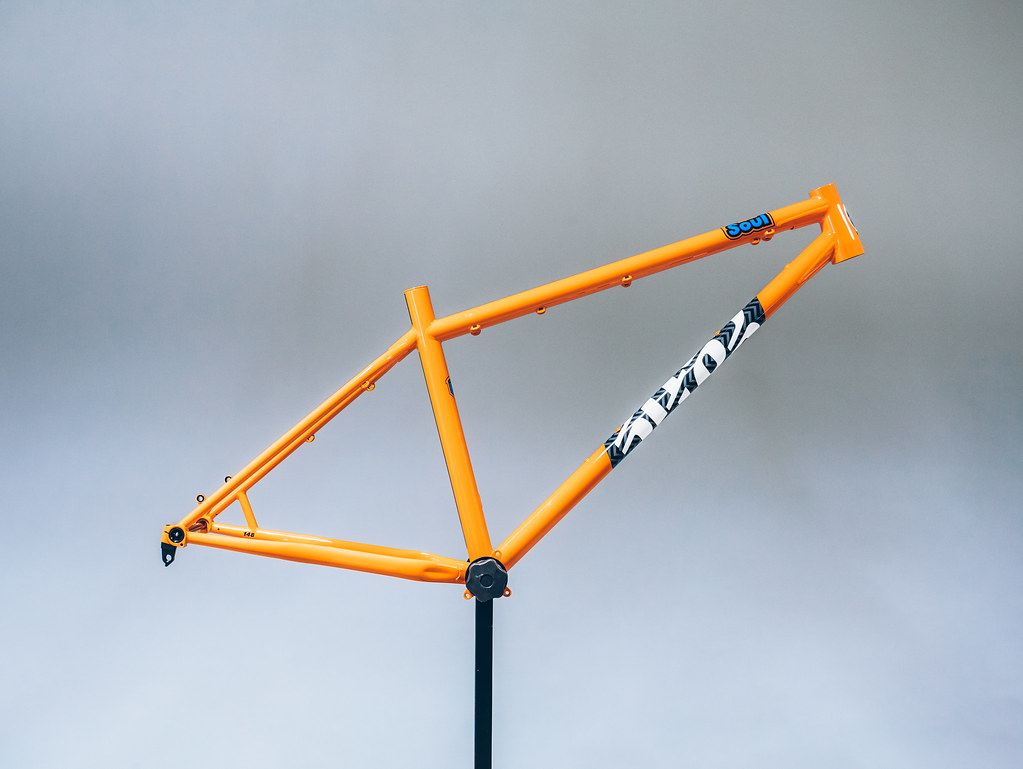
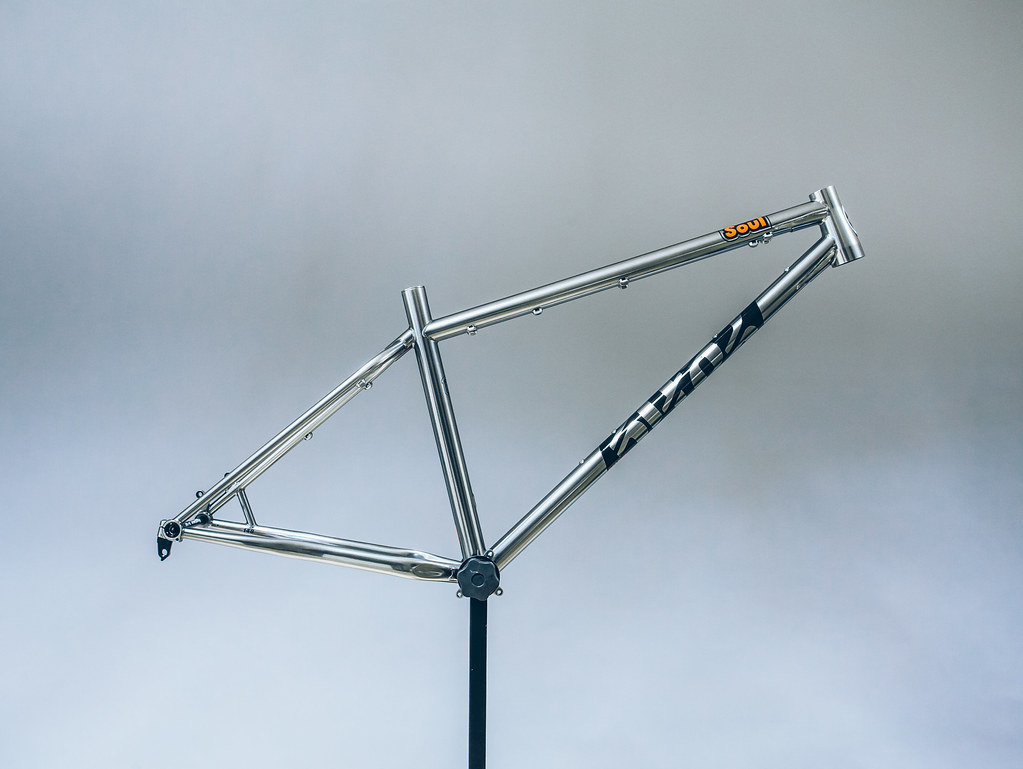
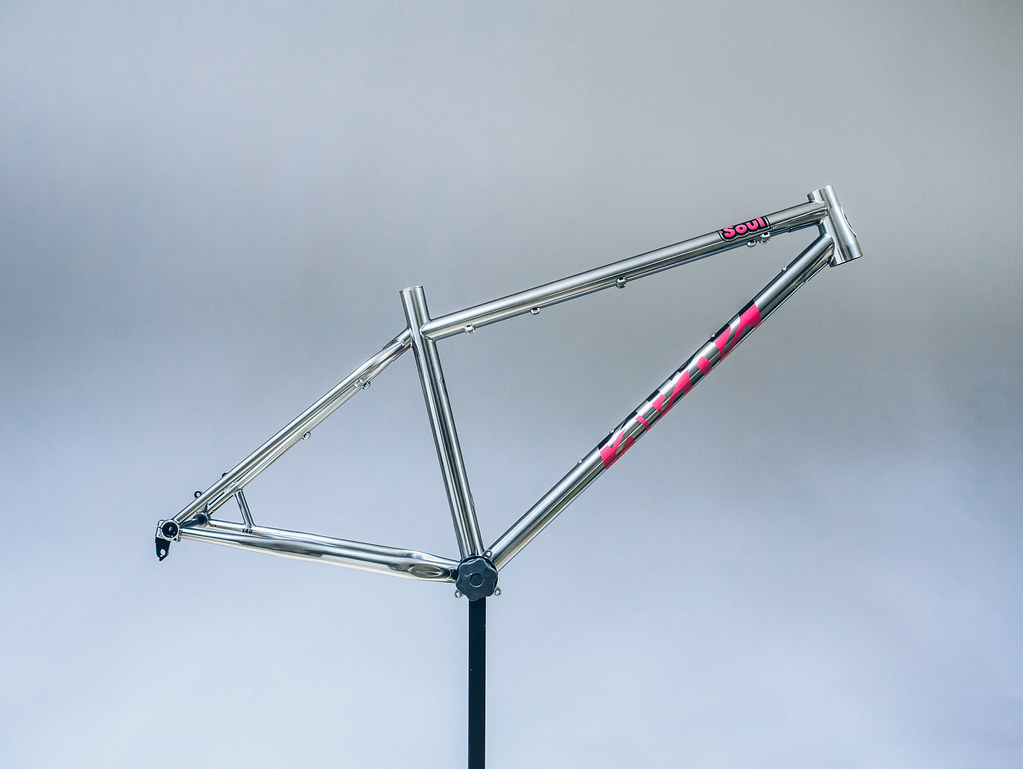
Check out some detail shots...


